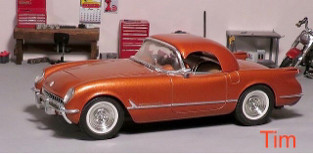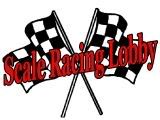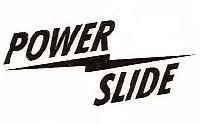Post by Mike on Mar 3, 2012 14:02:35 GMT -5
Below is a box opening of the kit components of the new Aoshima V-twin Wild Chopper. Hope you enjoy. Looks like a good kit.
youtu.be/WBErq_95loA
This latest offering from Aoshima is a nice change of pace as it’s an American subject in the form of a traditional chopper motorcycle. Though MRC Academy is listed as the distributor, I was unable to find anything on their site regarding Aoshima products. I did however find two of the upcoming Aoshima motorcycle releases on the Dragon Models USA website as they are listed as the US distributor on Aoshima’s site. Upon receiving the kit, the first thing I noticed was “Captain America” adorning the box art with a skull faced, US Flag helmet-wearing, middle finger saluting character. Guess they’re going for a niche market or playing on the American stereotype. Opening the kit reveals much more - pun intended. The first thing I see when I open the kit box is a cardboard picture of three scantily clad oriental women in black leathers for the “man cave”. Setting this aside after a good laugh, the kit finally revealed itself. The sprues are all cleanly molded with minimal mold lines and only one spot of minimal flash on one part. Lots of chrome, also cleanly molded, and what appears to be several building options for wheels, seat, and fork assembly (or a multi kit sprue used in another kit in the line). Another little detail that made me giggle was the raised letter tire brand “Bad Year” to avoid that licensing thing. The instructions are nicely done, but the paint directions are a bit to be desired. 6 call outs for basic colors - white, flat black, silver, blue, clear red and clear orange, however, detail painting and color variances will really make this kit show the detail. I’m building mine box-stock with a change in color - red as opposed to blue for the body color.
Moving on to the actual build process, the starting point is the transmission, battery and oil reservoir assembly. The battery is 4 pieces with a clear piece over the battery part. A simple box with a top would suffice unless you are going to build a show bike or something where you wanted that look. The oil reservoir has a chrome piece that goes between the upper and lower halves of the tank, and needs trimming to fit properly as it’s too tall and split the halves. Assembling the frame is a bit tedious and the instructions are the equivalent to following Billy around the neighborhood in The Family Circus cartoon - lots of dashed lines with arrows directing you to connecting points. Upon completion, the frame is a good looking bit on its own. The one fit issue with the whole assembly was installing the plate which holds the transmission. The two back holes would not line up with the studs despite looking at a few things that may cause the mis-alignment. I eventually ended up cutting the two posts and squaring it up off of the connecting point and vertical post on the mid section of the frame from there.
The engine assembly was smooth. The only issue was the air intake piece didn’t line up very well between the two cylinders. Assembling the rear tire, sprockets and chain assembly was very easy. The tire is slightly narrower than the rim so the edge does stick out, and there is not a mounting ridge for the rubber tire. The ridge would be nice to have on the rim and possibly force the outer edge of the tire to line up properly. Installing the rear wheel assembly allows the swing-arm to snap in to place within the frame assembly and float freely. Two chrome pieces adorn the upper part of the frame for the upcoming rear shock installation without issue. Installing the engine in to the frame is a bit tight and takes some twisting & turning but it seated nicely within the frame to two mounting points after squeezing it between the upper cross bar and lower frame. Next up is the transmission installation. Here again, the mounting studs and holes for the transmission do not match up on the plate. Attaching the clutch lever and test fitting the outer cover reveals that this will fit correctly in the next step, so again I’m forced to remove the mounting points to locate the transmission in the frame.
Up next is a series of instructional issues where steps 7 and 8 should be switched around. After installing the transmission, rear fender, and belt housing, the instructions call to install the battery and oil reservoir assembly and alternator. Putting the oil reservoir assembly in is impossible with the instructions as they are. I had to remove the rear fender from the model in the previous step to get the assembly in place. The way to do this would be install the oil reservoir assembly, and then come back and glue the alternator to the belt housing and installing it, and lastly install the fender. Also be sure you have a metric ruler on hand through the engine assembly as you’ll need it to cut the various lengths of rubber tubing for the brake cable, clutch, and spark plug wires.
The front fork assembly is relatively painless to assemble except stripping the chrome to get a good glue point on each piece of the fork, shock, and headlight mount. The spoked wheel up front goes together nicely and is held in place with a single threaded screw. No need for a brake shoe as it’s incorporated in to the fork assembly. The final touches of the bike incorporate installing the handle bars, grips, headlight, and seat. Installing the hose pieces to represent the brake and clutch lines is good. Another instructional issue says to connect the second hose from the right handle bar to the “right tank” without visual aid. The hose connects to a piece on the left side of the tank from a previous step. The gas tank is made of two separate halves which mount to either side of the frame leaving an obvious seam, which is then conveniently covered by a gauge cluster piece. Attaching the seat to complete the top-side of the bike leaves an obvious issue - the seat back is wide open. A simple bit of styrene and putty will patch the gap but a significant enough issue that should be addressed within the kit pieces to include a seat back. A sissy bar adorns the back of the seat and frames is up nicely. Topping off the build is a four piece exhaust - two header pieces, and two end pieces for the tail pipe - which lines up nicely with the cylinders and the mounting points on the frame of the bike.
All in all, this is a great kit offering from Aoshima. It’s nice to see an American icon like the chopper being offered from an overseas manufacturer. The detail in the kit is very nice and the potential for a stand-out model is there. Minor fit issues with the transmission plate and air intake are easily overcome, and making sure to plan ahead and reverse steps 7 and 8 to get the oil reservoir assembly in place will help things go smoothly. The gap in the back of the seat is a bit disappointing, but again an experienced modeler with a bit of styrene and putty will cure the issue. The overall fit of the kit is great with the above mentioned exceptions. Using good reference pictures and stepping away from the simplistic six color call outs in the kit will also make this model come to life. I would like to thank Aoshima for this review sample. It’s a great kit offering with nice details. I also look forward to another Aoshima motorcycle kit in the form of a US Army type which would be a great candidate for an old-school bobber motorcycle build.
youtu.be/WBErq_95loA
This latest offering from Aoshima is a nice change of pace as it’s an American subject in the form of a traditional chopper motorcycle. Though MRC Academy is listed as the distributor, I was unable to find anything on their site regarding Aoshima products. I did however find two of the upcoming Aoshima motorcycle releases on the Dragon Models USA website as they are listed as the US distributor on Aoshima’s site. Upon receiving the kit, the first thing I noticed was “Captain America” adorning the box art with a skull faced, US Flag helmet-wearing, middle finger saluting character. Guess they’re going for a niche market or playing on the American stereotype. Opening the kit reveals much more - pun intended. The first thing I see when I open the kit box is a cardboard picture of three scantily clad oriental women in black leathers for the “man cave”. Setting this aside after a good laugh, the kit finally revealed itself. The sprues are all cleanly molded with minimal mold lines and only one spot of minimal flash on one part. Lots of chrome, also cleanly molded, and what appears to be several building options for wheels, seat, and fork assembly (or a multi kit sprue used in another kit in the line). Another little detail that made me giggle was the raised letter tire brand “Bad Year” to avoid that licensing thing. The instructions are nicely done, but the paint directions are a bit to be desired. 6 call outs for basic colors - white, flat black, silver, blue, clear red and clear orange, however, detail painting and color variances will really make this kit show the detail. I’m building mine box-stock with a change in color - red as opposed to blue for the body color.
Moving on to the actual build process, the starting point is the transmission, battery and oil reservoir assembly. The battery is 4 pieces with a clear piece over the battery part. A simple box with a top would suffice unless you are going to build a show bike or something where you wanted that look. The oil reservoir has a chrome piece that goes between the upper and lower halves of the tank, and needs trimming to fit properly as it’s too tall and split the halves. Assembling the frame is a bit tedious and the instructions are the equivalent to following Billy around the neighborhood in The Family Circus cartoon - lots of dashed lines with arrows directing you to connecting points. Upon completion, the frame is a good looking bit on its own. The one fit issue with the whole assembly was installing the plate which holds the transmission. The two back holes would not line up with the studs despite looking at a few things that may cause the mis-alignment. I eventually ended up cutting the two posts and squaring it up off of the connecting point and vertical post on the mid section of the frame from there.
The engine assembly was smooth. The only issue was the air intake piece didn’t line up very well between the two cylinders. Assembling the rear tire, sprockets and chain assembly was very easy. The tire is slightly narrower than the rim so the edge does stick out, and there is not a mounting ridge for the rubber tire. The ridge would be nice to have on the rim and possibly force the outer edge of the tire to line up properly. Installing the rear wheel assembly allows the swing-arm to snap in to place within the frame assembly and float freely. Two chrome pieces adorn the upper part of the frame for the upcoming rear shock installation without issue. Installing the engine in to the frame is a bit tight and takes some twisting & turning but it seated nicely within the frame to two mounting points after squeezing it between the upper cross bar and lower frame. Next up is the transmission installation. Here again, the mounting studs and holes for the transmission do not match up on the plate. Attaching the clutch lever and test fitting the outer cover reveals that this will fit correctly in the next step, so again I’m forced to remove the mounting points to locate the transmission in the frame.
Up next is a series of instructional issues where steps 7 and 8 should be switched around. After installing the transmission, rear fender, and belt housing, the instructions call to install the battery and oil reservoir assembly and alternator. Putting the oil reservoir assembly in is impossible with the instructions as they are. I had to remove the rear fender from the model in the previous step to get the assembly in place. The way to do this would be install the oil reservoir assembly, and then come back and glue the alternator to the belt housing and installing it, and lastly install the fender. Also be sure you have a metric ruler on hand through the engine assembly as you’ll need it to cut the various lengths of rubber tubing for the brake cable, clutch, and spark plug wires.
The front fork assembly is relatively painless to assemble except stripping the chrome to get a good glue point on each piece of the fork, shock, and headlight mount. The spoked wheel up front goes together nicely and is held in place with a single threaded screw. No need for a brake shoe as it’s incorporated in to the fork assembly. The final touches of the bike incorporate installing the handle bars, grips, headlight, and seat. Installing the hose pieces to represent the brake and clutch lines is good. Another instructional issue says to connect the second hose from the right handle bar to the “right tank” without visual aid. The hose connects to a piece on the left side of the tank from a previous step. The gas tank is made of two separate halves which mount to either side of the frame leaving an obvious seam, which is then conveniently covered by a gauge cluster piece. Attaching the seat to complete the top-side of the bike leaves an obvious issue - the seat back is wide open. A simple bit of styrene and putty will patch the gap but a significant enough issue that should be addressed within the kit pieces to include a seat back. A sissy bar adorns the back of the seat and frames is up nicely. Topping off the build is a four piece exhaust - two header pieces, and two end pieces for the tail pipe - which lines up nicely with the cylinders and the mounting points on the frame of the bike.
All in all, this is a great kit offering from Aoshima. It’s nice to see an American icon like the chopper being offered from an overseas manufacturer. The detail in the kit is very nice and the potential for a stand-out model is there. Minor fit issues with the transmission plate and air intake are easily overcome, and making sure to plan ahead and reverse steps 7 and 8 to get the oil reservoir assembly in place will help things go smoothly. The gap in the back of the seat is a bit disappointing, but again an experienced modeler with a bit of styrene and putty will cure the issue. The overall fit of the kit is great with the above mentioned exceptions. Using good reference pictures and stepping away from the simplistic six color call outs in the kit will also make this model come to life. I would like to thank Aoshima for this review sample. It’s a great kit offering with nice details. I also look forward to another Aoshima motorcycle kit in the form of a US Army type which would be a great candidate for an old-school bobber motorcycle build.








